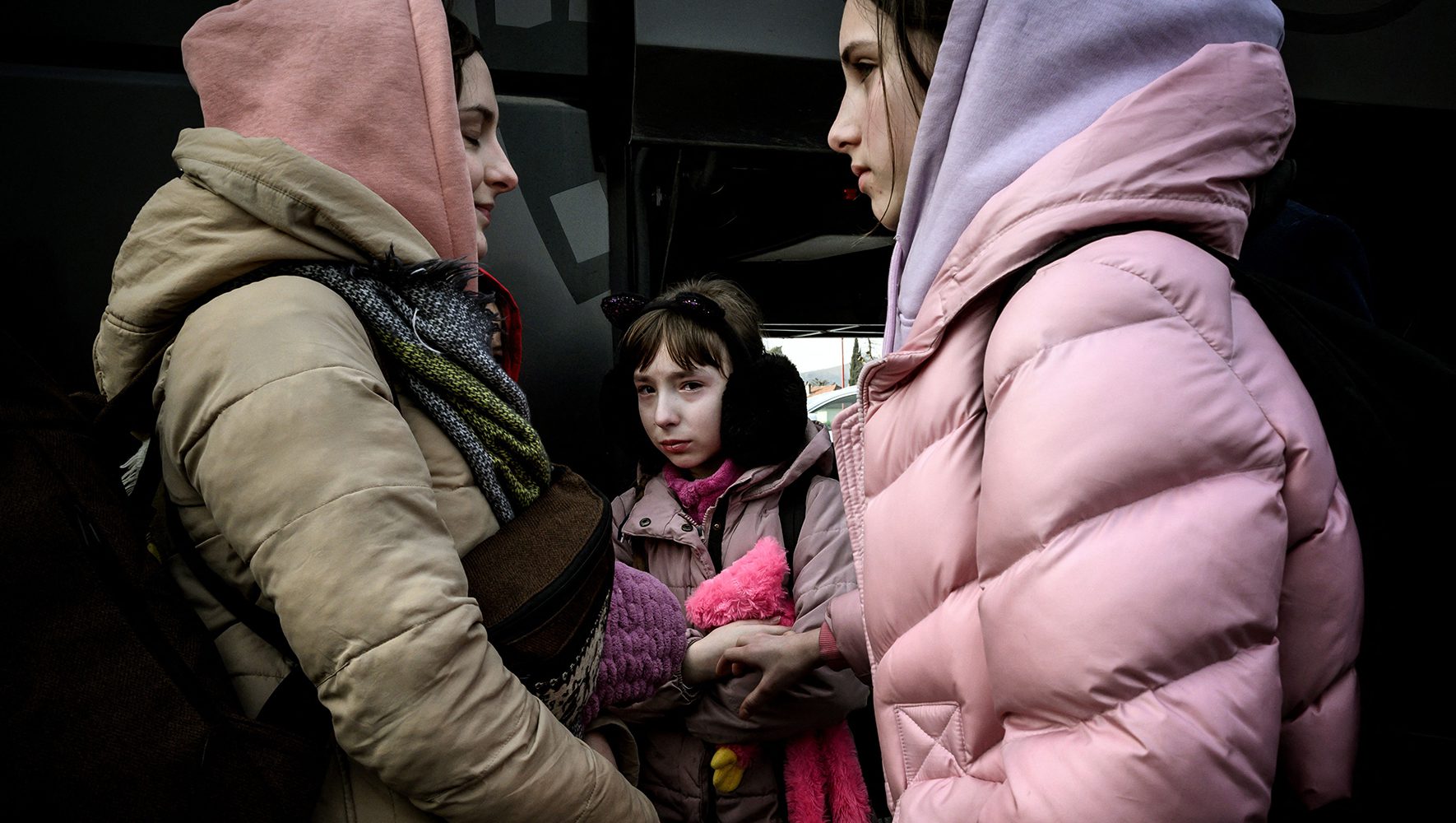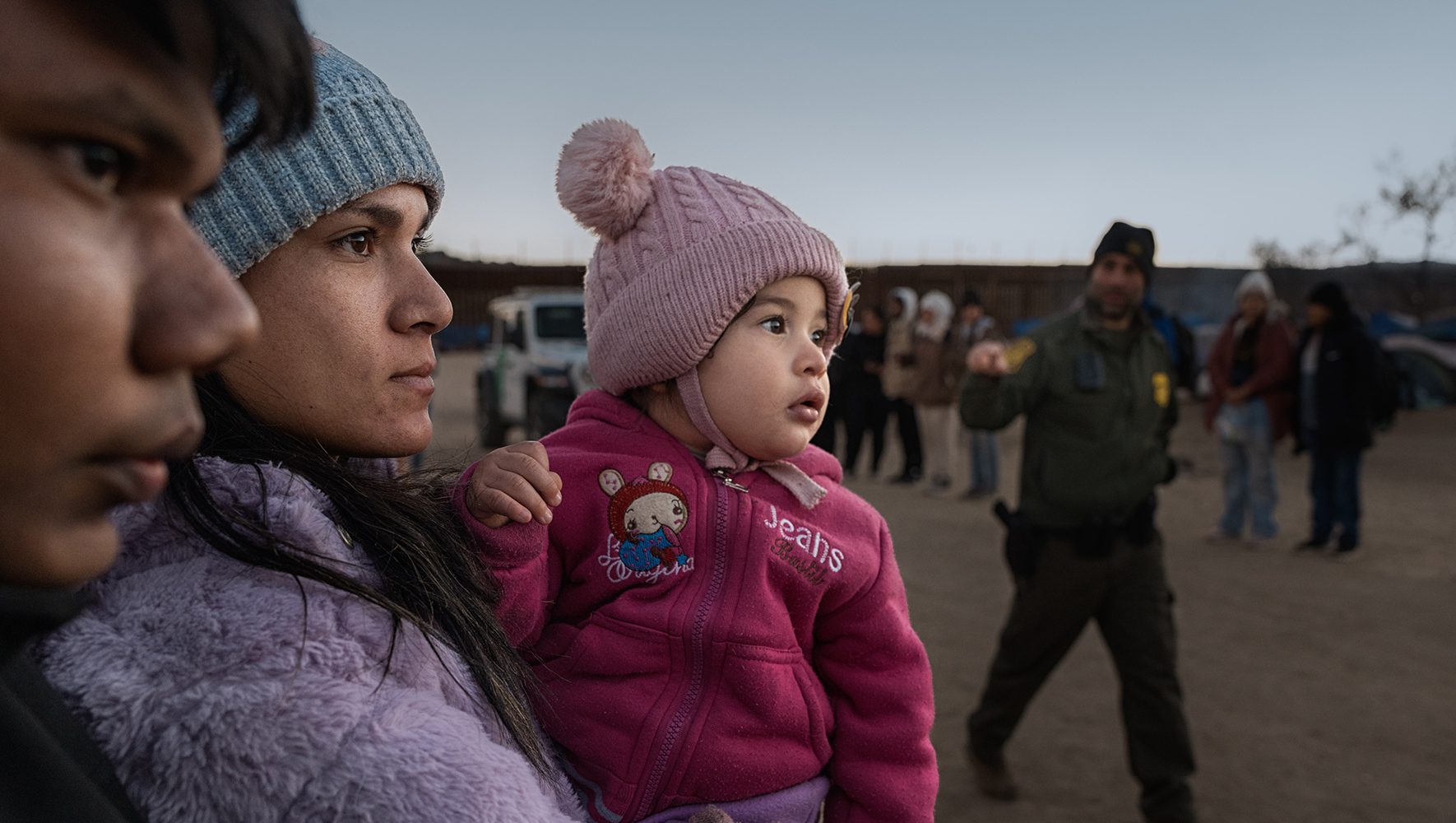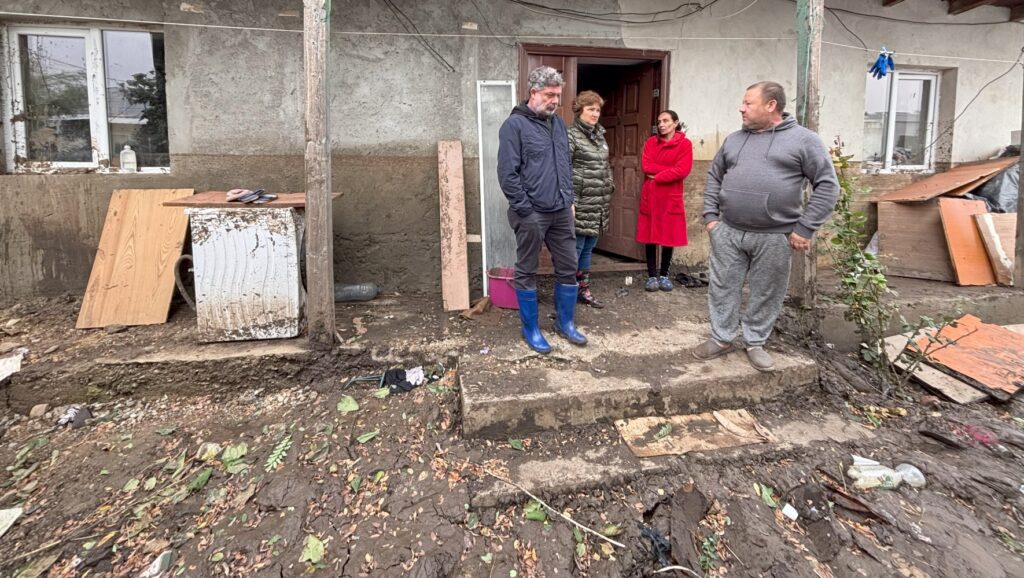
Refugees from Ukraine arrive by bus in Saint-Pierre-de-Chandieu, eastern France, on March 3, 2022,(Jeff Pachoud/AFP via Getty Images)
This week, the “New EU Pact on Migration and Asylum” faces a last committee vote in the European Parliament before a final full vote in April. The “Pact” agreement, which is years in the making, responds to a decade of recurring crises at Europe’s borders.
The new laws aim to surmount the political impasse on European Union migration policy by limiting the entry of migrants to the EU, accelerating asylum procedures, facilitating returns, and better sharing asylum responsibilities among states. The Pact reflects growing political will to deter “irregular” arrivals, especially those without a legitimate asylum claim.
This premise however — that many people arriving in Europe are not in danger and are taking advantage of the system — is refuted by official statistics showing that the majority of asylum seekers are fleeing persecution and violence. In 2024, more people are forcibly displaced worldwide than ever before. Given the shortage of safe pathways, most people seeking asylum have very little choice but to arrive spontaneously at Europe’s borders, which is their right under international law.
The likely consequences of the agreement include the expansion of harmful detention across Europe, increased pressure on border states, and more frequent use of emergency measures that undermine human rights.
What changes does the Pact introduce?
Under the new rules, people arriving at the EU’s borders will be screened and detained at the border to determine if they pose a security risk or are especially vulnerable, and certain categories of asylum seekers will be directed to accelerated asylum procedures. States are empowered to deviate from EU legal standards in so-called crisis situations, and a new “solidarity mechanism” aims to share asylum responsibilities among states. The Pact also updates standards on living conditions for asylum seekers, increases the ways in which their data can be used, and establishes common standards for resettlement procedures.

New Bill Would Trade Away Asylum Seekers’ Rights
Read MoreWhat risks do the new laws pose?
1. Rights violations during fast-tracked asylum procedures
Under the Pact, many more asylum seekers will be subjected to fast-tracked asylum and return (deportation) procedures. Accelerated, substandard procedures at the border will be widely used, and people will face short time frames for interviews, limited or no access to legal advice, inadequate assessments of their vulnerability, and obstacles to appealing the decisions made in their cases.
Those who travelled through so-called “safe countries” before reaching Europe — such as Tunisia, Egypt, or Turkey — can have their claim discarded without any assessment of the individual persecution they face. They risk being returned to those countries, where they may face human rights abuses or be deported to their own countries where they may suffer harm or death.
2. A massive increase in detention of asylum seekers across Europe
The new laws require large-scale “screening” and processing of asylum seekers in facilities at borders. Various categories of asylum seekers will then be held in closed facilities at borders for up to 12 weeks while their claim is being assessed. During this time, asylum seekers would be deemed legally to not be on EU soil — despite being physically present — increasing the risk that they will be denied access to rights and services. People can then be detained for a further 12 weeks if their claim is rejected. In reality, they are likely to be detained much longer as countries of origin are often unwilling or unable to take back their nationals, preventing quick deportation. Extended detention, with limited access to legal assistance, contravenes European and international law.
3. Border states continue to be disproportionately responsible for asylum seekers
Currently, the EU state upon which an asylum seeker first sets foot, is, in most cases, responsible for hosting them and assessing their claim. This has placed a disproportionate burden on states at the borders, incentivizing them to conduct illegal pushbacks and ignore boats in distress. These responsibility rules, which have generated dire humanitarian conditions at borders, are maintained in the Pact. Yet new screening and detention at borders will further increase the pressure on border states. A “solidarity mechanism” is introduced to offset this imbalance. States that are not facing migratory pressure can choose to either provide funding — to states at the border or to countries outside the EU — or they can relocate and host asylum applicants. As relocations are politically unpopular, the new mechanism is unlikely to lead to a fairer distribution of asylum seekers across the EU. Further, while the “solidarity funds” can be used to improve living conditions, they may also be used to build prison-like detention centres at borders or to fund migration control outside the EU.
4. Rights violations due to emergency measures for crises
At times of high numbers of arrivals, states will be able to delay the registration of asylum seekers, channel them through fast-tracked and substandard procedures, and detain them for longer periods. Emergency measures, which reduce human rights safeguards, can also be used when states claim that “instrumentalization” is taking place. Instrumentalization broadly describes any situation in which people seeking protection are manipulated by “hostile actors”: this vague definition leaves the concept open to political interpretations that undermine the right to seek asylum.
New screening and detention at borders will further increase the pressure on border states.
Are there positive elements of the Pact?
A few. Though most changes introduced by the Pact erode the rights of asylum seekers, certain aspects could offer opportunities to protect refugees. New rights monitoring mechanisms will be introduced during processing at the border. As these mechanisms lack necessary safeguards in law, they will only be able to remedy rights abuses if states ensure they are sufficiently independent, well-resourced, and broad in scope. If states prioritize relocations when offering “solidarity contributions,” responsibility for asylum seekers could be shared in a fairer manner. Lastly, a new resettlement framework could open up more safe routes to Europe, if it results in states increasing their resettlement pledges.
What can be done now?
Worldwide, more than 110 million people are forcibly displaced. Without safe routes to seek asylum, or concerted action to address the crises, violence, and persecution they face at home, people will continue to arrive in search of safety at EU borders. Europe can effectively and humanely manage these arrivals by ensuring national asylum systems are properly resourced, fit to cope with emergencies, and bolstered by European solidarity.
We call upon EU member states to:
- Uphold the right to access an asylum procedure and the right not to be returned to harm.
- Ensure fair, individual assessment of asylum claims.
- Detain only as a last resort and ensure humane living conditions for asylum seekers.
- Avoid using emergency measures that place rights at risk, and instead use expediated recognition or temporary protection to respond to large groups seeking protection.
- Invest in asylum systems, especially preparedness infrastructure and contingency planning.
- Prevent and sanction violations of the rights of people on the move.
The bloc’s effective welcome of some five million Ukrainians in 2022 demonstrates that a rights-based approach to migration can be mutually beneficial for states and people alike. As the Pact enters into force, European countries remain bound by human rights standards laid out in international and European law. They must now show leadership implementing the new laws in a way that ensures the safety and dignity of asylum seekers.


